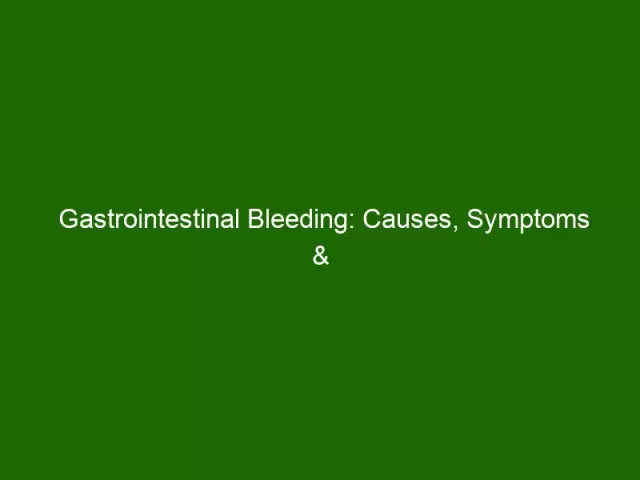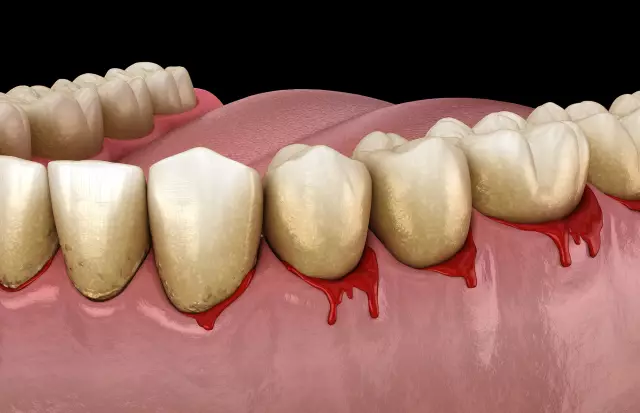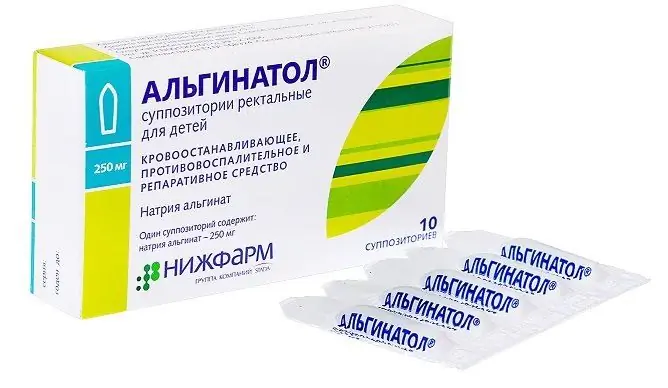- Author Rachel Wainwright [email protected].
- Public 2023-12-15 07:39.
- Last modified 2025-11-02 20:14.
Gastrointestinal bleeding
Gastrointestinal bleeding is not an independent disease, but a complication of many diseases of the gastrointestinal tract. Help with gastrointestinal bleeding should be provided as quickly and fully as possible, since this is a formidable complication, in severe cases it can be fatal.
Causes of gastrointestinal bleeding

Gastrointestinal bleeding is caused by damage to the wall of the gastrointestinal tract with the involvement of a blood vessel or small capillaries anywhere in it. The most common causes of gastrointestinal bleeding are the following:
- Ulcers of the stomach and duodenum;
- Hemorrhoids;
- Tumors, both benign (polyposis) and malignant (cancer), in any part of the gastrointestinal tract;
- Varicose veins of the esophagus;
- Cracks in the mucous membrane of the esophagus;
- Cracks in the anus;
Gastrointestinal bleeding in children is most often caused by trauma to the esophagus or stomach, including chemical burns, and hemorrhagic disease of the newborn.
Types of gastrointestinal bleeding
Distinguish between gastrointestinal bleeding from the upper part of the gastrointestinal tract, which includes the esophagus and stomach, and the lower part, consisting of the intestines.
Duration of gastrointestinal bleeding can be:
- One-time (episodic);
- Recurrent (recurring periodically);
- Chronic (persistent).
By form:
- Sharp;
- Chronic.
By the nature of the manifestation:
- Hidden;
- Explicit.
Gastrointestinal bleeding symptoms
The general symptoms of gastrointestinal bleeding are similar to those of blood loss in general. These include pallor of the skin, weakness, tinnitus, cold sweat, tachycardia, shortness of breath, dizziness, flies before the eyes, lowering blood pressure. Pain, or increased pain already present, is not common to gastrointestinal bleeding.
The nature of the most secreted blood depends on in which part of the gastrointestinal tract there was a violation of the integrity of the blood vessel, and on whether this bleeding is latent or explicit.
First, let's focus on obvious gastrointestinal bleeding.

Gastrointestinal bleeding from the upper gastrointestinal tract manifests itself as bloody vomiting (hematemesis). Vomiting may contain unchanged blood, which is characteristic of bleeding from the esophagus, or it may look like coffee grounds, if the bleeding has occurred in the stomach, the characteristic appearance is given to it by blood clotted by hydrochloric acid. However, gastric arterial bleeding of significant force can also take the form of vomiting with unchanged blood, since the blood does not have time to clot.
Gastrointestinal bleeding from the small intestine and colon can manifest itself both in the form of vomiting of "coffee grounds", and in the form of melena - bloody diarrhea with a tarry consistency and black color. Melena may continue for several days after the bleeding in the upper gastrointestinal tract stops, tarry feces will be released as the contents move through the intestines.
If bleeding occurs in the lower gastrointestinal tract (large intestine, rectum, anus), then it manifests itself as bloody stool (hematochezia). In this case, the feces contain an admixture of unchanged scarlet blood, sometimes in significant quantities. However, sometimes bloody stools can be present with significant bleeding in the small intestine, when, due to the large amount of blood, the contents of the small intestine move very quickly.
Latent gastrointestinal bleeding is detected in laboratory studies of feces and gastric juice. Latent bleeding from the upper gastrointestinal tract may look like an admixture of black flakes in vomit, in all other cases it is invisible to the naked eye, and manifests itself only as general signs of increasing anemia.
There is no particular difference in the manifestation of gastrointestinal bleeding in children and in adults, only anemia in children develops much faster, and because of the smaller compensatory capabilities of the body, the consequences can be more dangerous.
First aid for gastrointestinal bleeding
If acute bleeding has occurred, first aid for gastrointestinal bleeding is as follows:
- Call an ambulance as soon as possible;
- Immediately put the patient to bed;
- To exclude the ingestion of any substances into the gastrointestinal tract, including water, medicines and food;
- Put an ice pack on your stomach;
- Provide fresh air access to the room where the patient lies;
- Ensure constant monitoring of him before the arrival of an ambulance, without leaving one.
First aid for gastrointestinal bleeding in children does not differ from that in adults. It is important to provide the child with peace, which is somewhat more difficult than for an adult, especially if the child is small. If gastrointestinal bleeding in children is suspected to be caused by trauma, care should be taken to identify the traumatic factor (sharp object, chemical) as accurately as possible.
Emergency medical care for gastrointestinal bleeding depends primarily on the strength of the bleeding and its nature, as well as on the patient's condition. In the event that the bleeding of considerable force, with scarlet (arterial) blood, and it cannot be stopped within a certain time by conventional means, the patient is taken to the emergency department.
Treatment of gastrointestinal bleeding
Treatment of gastrointestinal bleeding, depending on its nature, is carried out by surgical or conservative means.

With bleeding of significant strength, if it is not possible to stop the blood loss, they resort to resuscitation techniques and emergency surgery. Before the operation, it is desirable to at least partially replenish the volume of lost blood, for which infusion therapy is carried out by intravenous infusion of blood products or its substitutes. In case of a threat to life, an urgent operation is possible without such preparation. The operation can be performed both by the classical, open method, and by endoscopic (FGS, laparoscopy, sigmoidoscopy, colonoscopy), depending on the indications. Surgical treatment of gastrointestinal bleeding consists in ligation of the veins of the esophagus and stomach, the imposition of a sigmostomy, resection of the stomach or intestine, coagulation of the damaged vessel, etc.
Conservative treatment of gastrointestinal bleeding consists of the following measures:
- The introduction of hemostatic agents;
- Evacuation of blood from the gastrointestinal tract by introducing a nasogastric tube and cleansing enemas (if the bleeding is not from the lower gastrointestinal tract);
- Replenishment of blood loss;
- Support of vital body systems;
- Treating the underlying bleeding disorder.
YouTube video related to the article:
The information is generalized and provided for informational purposes only. At the first sign of illness, see your doctor. Self-medication is hazardous to health!






